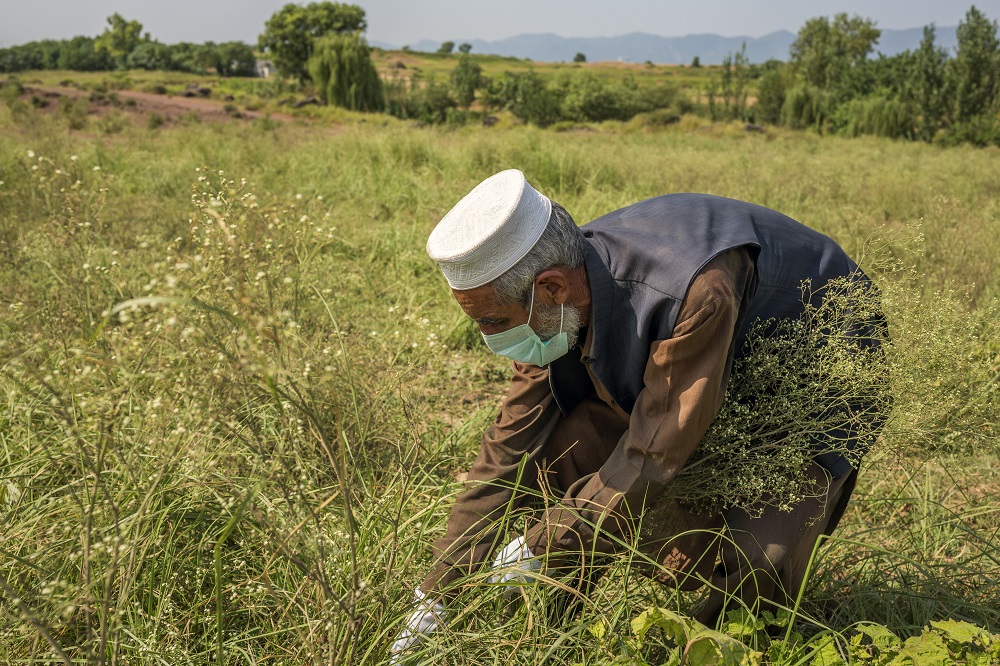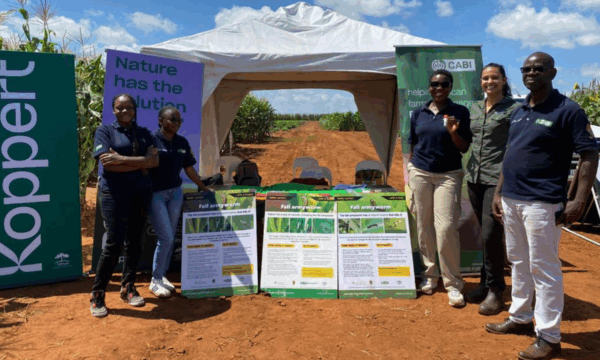The stem boring weevil Listronotus steosipennis has been approved for release as a biocontrol agent for the management of Parthenium hysterophorus in Pakistan. Parthenium has spread throughout much of the country causing problems in both rural and urban areas. It is hoped this weevil will prove a sustainable and effective management option for this invasive weed.

Parthenium – highly invasive
Native to tropical America, parthenium has been accidentally introduced into several countries. In Pakistan it now covers thousands of hectares of productive and rangeland, becoming a huge economic burden. What’s more, it is considered one of the most noxious invasive species and is a threat to human and animal health.
Parthenium’s success as an invasive species can be attributed to its wide adaptability, drought tolerance, high seed production, longevity of seeds in soil seed banks and lack of natural enemies in non-native regions.
Parthenium’s Natural enemies
However, parthenium does has several natural enemies in its native range. Among the enemies there that help manage its spread is the stem-boring weevil, Listronotus setosipennis, (Coleoptera: Curculionidae). Prior to Pakistan, host range testing has been carried out in Australia, South Africa and Ethiopia and the weevil has already been successfully released in these countries.
Listronotus setosipennis controls parthenium by laying its eggs primarily in the flowers where newly hatched larvae tunnel into the stem and continue to feed, eventually exiting at the base of the stem to pupate in the soil. Several larvae feeding in the stem can kill parthenium rosettes and mature plants. In Australia, the weevils were found to provide additional control of parthenium particularly in drought areas, where other biocontrol agents struggled to survive.

Host range testing
CABI applied for the importation of this weevil to perform host range testing at the new quarantine facility at CABI’s Central and Western Asia (CWA) offices in Pakistan. CABI’s Dr. Philip Weyl, with the help of Lorraine Strathie (ARC-PHP) successfully imported 200 adult Listronotus setosipennis from the rearing facility at the Plant Protection Research Institute of the Agricultural Research Council (ARC-PHP), in Cedara, South Africa, in April 2019.
At the quarantine facility, CABI conducted host range testing on several species and varieties of important native and crop plants to ensure the weevil did not pose a risk to indigenous fauna.
Host specific
Comprehensive testing of the weevil’s host range has already been done in Australia, South Africa and Ethiopia. A further 22 species were added to the test plant list for Pakistan, focusing on native and crop or ornamental species that have overlapping distributions with parthenium.
The tests conducted in the other countries all concluded that this weevil is host-specific and a safe biological control agent for use against parthenium, leading to approval for release. The assessments conducted in Pakistan corresponded with these findings and confirmed the narrow host range of this weevil experienced by other researchers in Australia, Ethiopia and South Africa.
Halting parthenium’s spread
Following the host range testing, an application was submitted for the release of the stem-boring weevil. This has since been approved with permission for CABI to release Listronotus setosipennis in phases. The first phase will be a release in areas away from cropping regions of the country. The second phase will consist of scientific research to monitor and evaluate the impacts of the weevil to enable its spread further in the country. CABI is currently in the process of mass-rearing the weevil for planned releases in spring 2023.
It is hoped that the introduction of this weevil will help manage the spread of parthenium in a sustainable way, without the use of chemicals or machinery that can negatively impact the environment.
Further reading on parthenium
Further information on parthenium: Invasive Species Compendium, Parthenium
Related News & Blogs
CABI-led study suggests women in Pakistan need greater access to information on parthenium weed
A new CABI-led study investigated smallholder farmers’ knowledge, attitudes and practices towards parthenium and biological control in Pakistan. The study brings attention to important gendered aspects of parthenium impact. It also highlights smallhold…
27 June 2025




